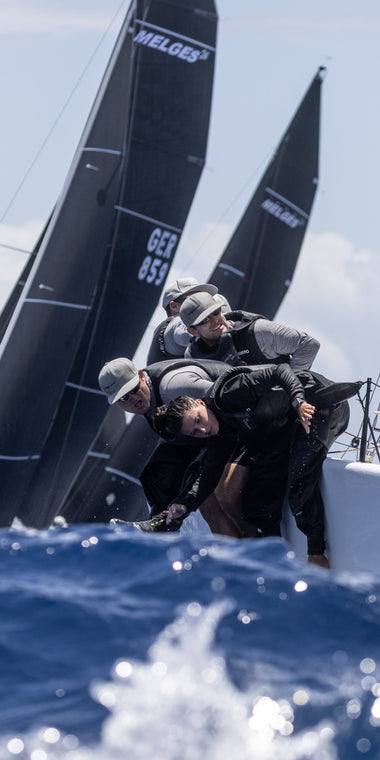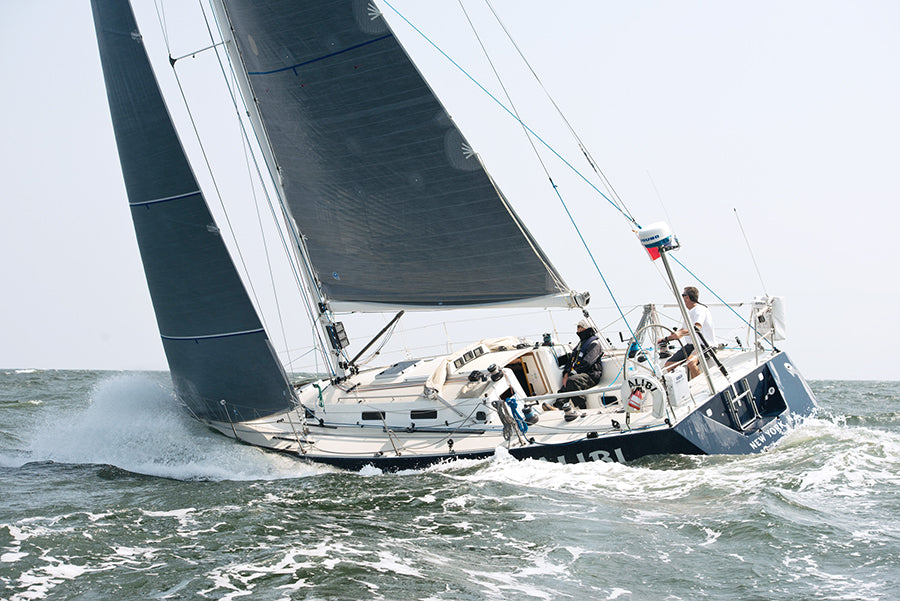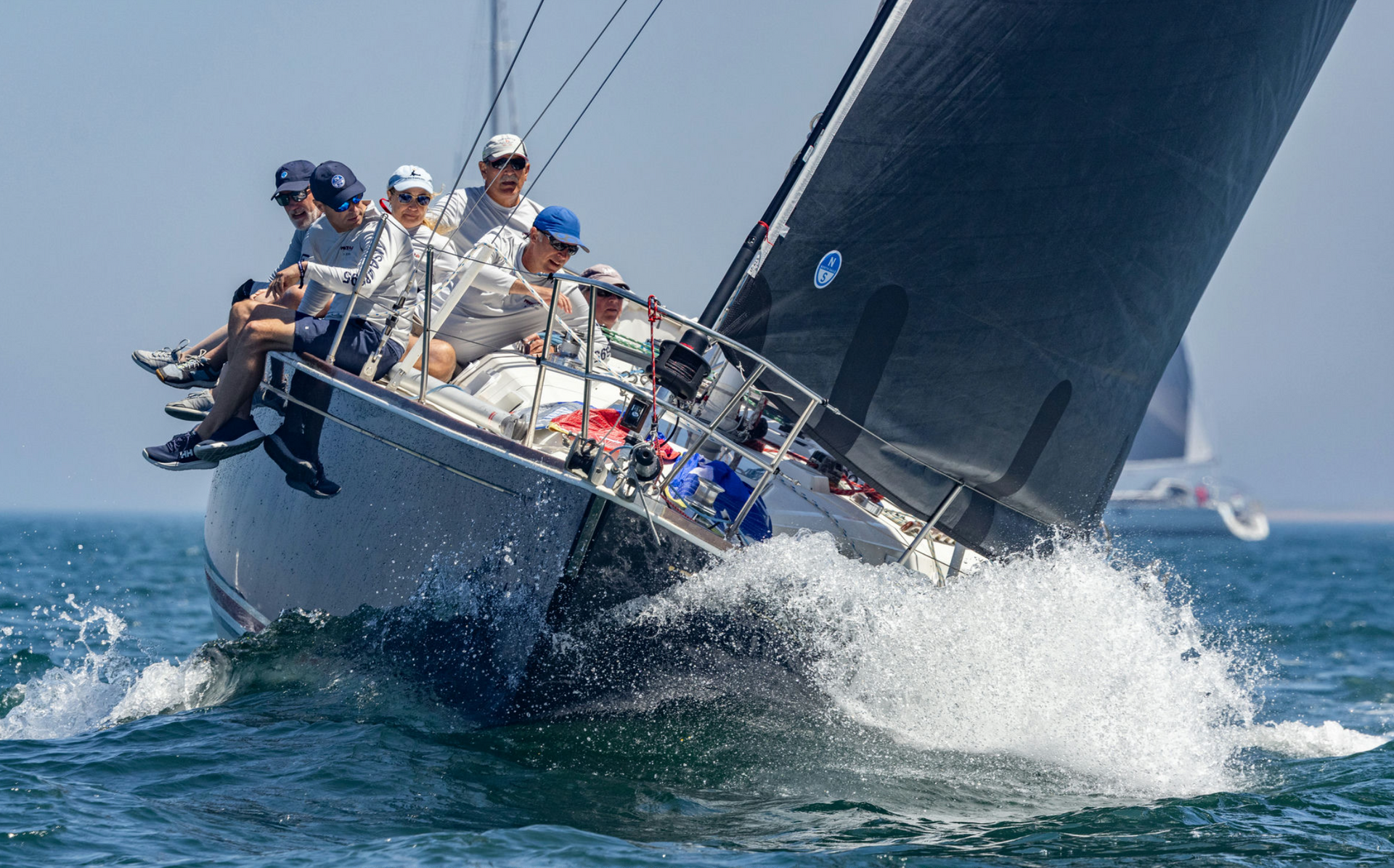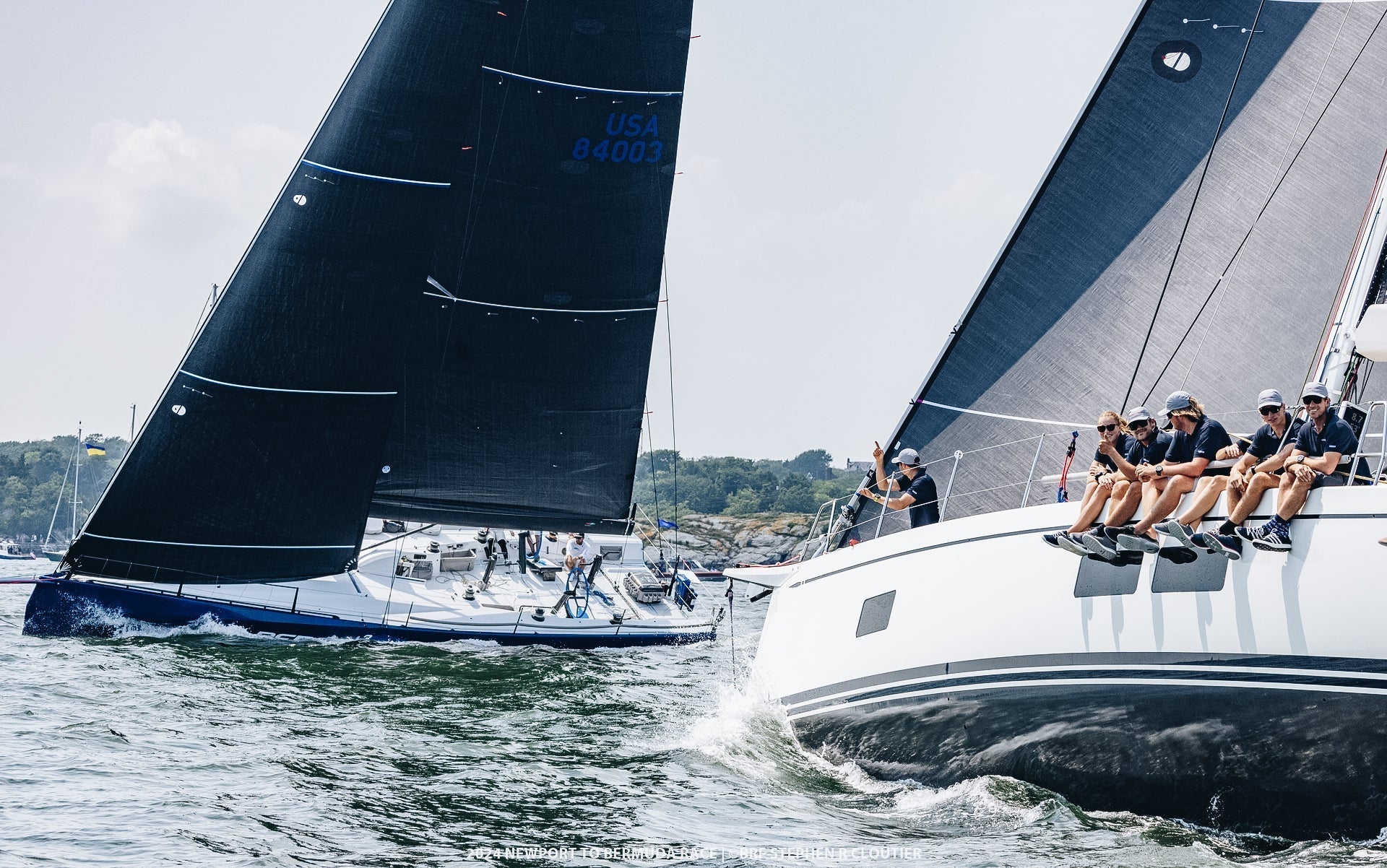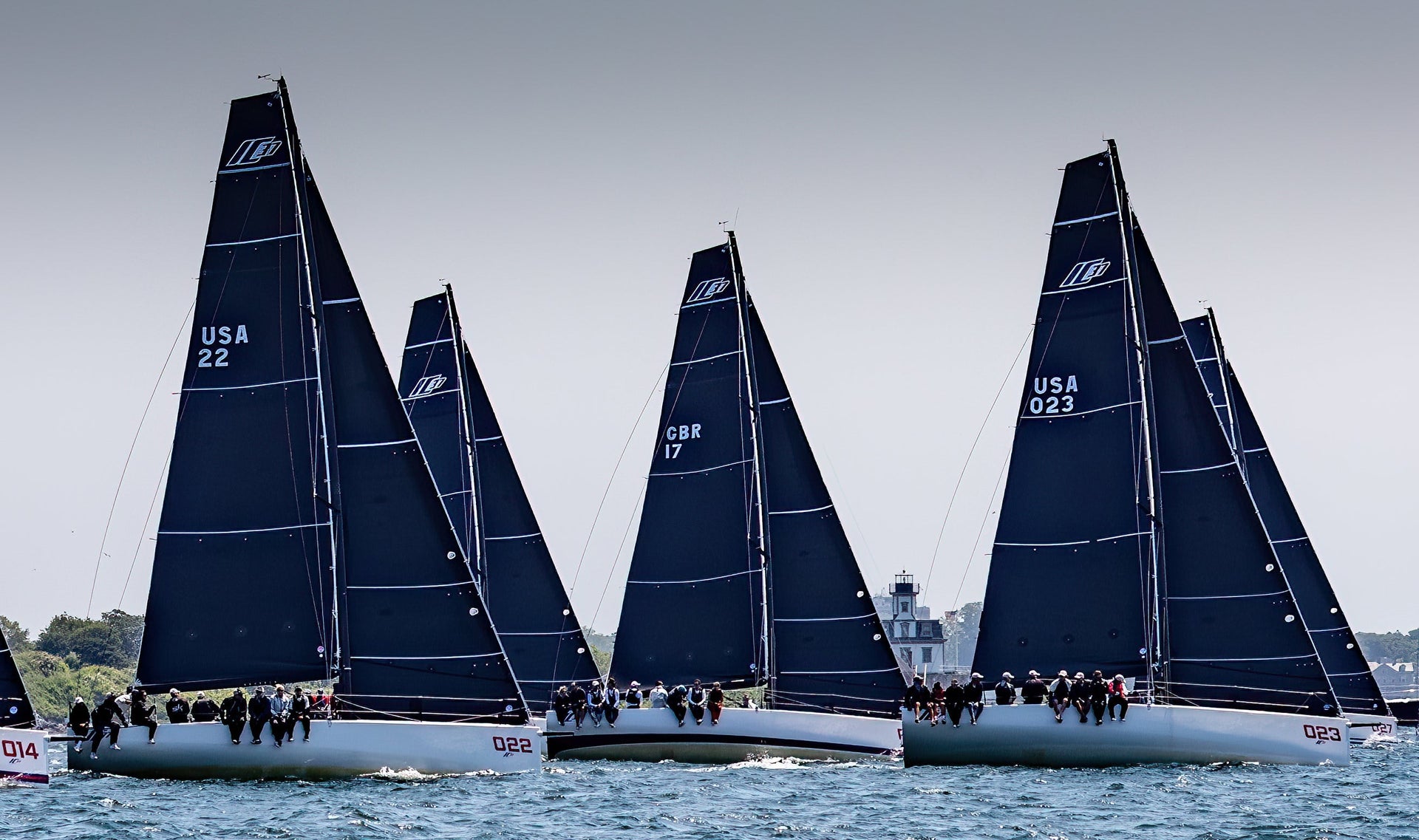THE PERFECT ALIBI
THE PERFECT ALIBI
Powered by 3Di, Gary Grant takes on doublehanded sailing

Gary Grant races his J/120 Alibi doublehanded and regularly beats fully crewed boats in major long distance races. Here’s what he had to say about his sails, his racing program, and his plans for the future with the help of his North Sails expert, Tom Castiglione.
When did it all start and what have you won recently?
I bought Alibi new in 2004 when I lived in London. My first boat was a 32-foot cruising boat, which didn’t allow me to race, so I got the J/120 which gives me great opportunities to compete.
In the 2015 Halifax Race, we were first in our division and in class against four fully crewed J/120s. We had a 2nd in the Block Island Race and the Vineyard Race, and we also won Stamford Yacht Club’s doublehanded racing trophy for that year.
Who’s your partner in crime?
Stephen Fisk is my primary crew. We started sailing together in 2005. Stephen was a member of my yacht club, and I heard he had a lot of experience in distance racing and on the J/120. Both of us really enjoy sailing together, and we both enjoy sailing doublehanded. We wanted to try something different, and we enjoy it so much we haven’t given up.

What’s it like competing against fully crewed teams?
We do well in light air against the fully crewed boats, but when the moderate to heavy air conditions come up we lack weight on the rail. We use the autopilot when my help is needed up front, and as the sea-state picks up, it isn’t as effective either. So the light to medium wind range is our preference.
In the 2013 Block Island Race, we beat fully crewed J/120s. In 2017 we won the doublehanded PHRF award, even though we got third in our division on corrected time. My boat is a bit different from some of the other J/120 teams, as we have a carbon mast and they have aluminum masts.
When did you know you wanted to make the switch to 3Di?
In 2004 I had a suit of 3DL sails, but after about 3 years they started to deteriorate. I decided I wanted to go with something bulletproof, so I reached out to my local loft and got the details from Tom
“After seeing the success of 3Di in the TP52 class and in the Volvo Ocean Race, I knew it was going to be the right move. I needed a set of sails that wouldn’t deteriorate on the shelf and was going to be reliable year after year. Doublehanded sailors need robust sails, as it’s hard to change sails without flogging or luffing, and we are often pushing our sails above their designated wind ranges.”
What are some advantages of 3Di for doublehanded sailing?
For sail changes, the sails get more wear and tear naturally since we are short on crew and it takes a little more time to make changes. They luff a bit longer than they would if we had a full crew to take them down. The J/120 is a stiff boat, and we often push the #1 pretty hard, especially in the reaching position just because it’s hard to make changes on that point of sail.
The greatest advantage of having 3Di is that when you get them set up they don’t stretch. It’s a major factor for doublehanding the boat. When you are alone on deck you are always thinking “would the boat be faster if I was steering or trimming?” You may spend less time trimming being alone on deck when your crew is sleeping or eating.
“The 3Di has been great for us, they are bulletproof and look just as good today as they did when I got them in 2014.”
Gary commented; “Doublehanded sailing has gotten more popular in distance racing. 3Di sails are perfect for distance racing in general, and especially in doublehanded or shorthanded sailing because they are durable and they hold their shape perfectly once the sheets are set. It really makes a big difference. They can handle the flogging and uncontrollable luffing that occurs when it takes a more time to execute a maneuver, especially when we only have only two sets of hands.”
If the sea state doesn’t allow you to leave the helm, how do you go about making sail changes?
If we have to do a sail change, we pick a point of sail that the autopilot can handle well, and go from there. Under the mainsail alone, the autopilot does the best. With an asymmetrical the angles become critical, so you end up oversteering with the autopilot.
“When we go offshore we take off the roller furler and use our 3Di hank-on sails. It is just easier for us. With the hank-on option, the sails practically flake themselves as they come down and it saves us time and manpower.”
Do you have any “memorable” moments sailing shorthanded?
We’ve had our fair share of wipeouts and spinnaker wraps. Fortunately, the boat is pretty well behaved so when it does go over, it happens slowly then comes right back up again, so it hasn’t been too bad.
A memorable moment was the 2013 Block Island Race, when we got the overall award for our division the year Rambler broke the course record. After the awards, I went up to the PRO and asked why they didn’t give it to Rambler. He replied,“Rambler doesn’t race against anyone, and you are in one of the most competitive fleets.”
In that particular race, the wind was perfect for us. We started out with the Jib-top reacher and came back in with the A3. The wind was around 18-22 knots. Around 2 AM we put the kite up to sail around Block Island, and the shackle on the sheet came off and all of a sudden we had the kite blowing all over the place. We were trying to get it down and it wrapped around the headstay. I set the autopilot and we barely got the sail down in time (5 miles later!) to put the jib up. We ended up not losing any ground at all, as it was perfect timing. When it’s windy and we both have to be on the foredeck, it can be a little crazy. We pick angles so if the boat gets caught we don’t roll into a jibe. We always set the autopilot so we would round up, as opposed to a crash jibe if she got pushed by a wave. The worst that could happen is we get a wave over us, that’s why we have our gear on and we are always clipped in.

How did Alibi get her name?
I’m a lawyer by training so it’s a good name for the boat. It’s not an excuse, which most people think when they hear the term. It means you couldn’t have done what you are being accused of because you were not there.
“If I’m on my alibi, I can’t be doing anything wrong.”
What is different about preparing for a doublehanded distance race vs. a normal fully-crewed distance race?
It’s like tag-team sailing. When one crew is sailing the boat, the other is down below. I have a different way of setting things up on the boat from what Steve does. After criticizing each other and trying to improve each other’s trimming styles, we’ve optimized our techniques together and now we sail more consistently, which has resulted in more consistent results.
Do you have a plan if something goes wrong?
That’s one of the reasons I knew I had to get my 3Di sails to hank-on. In 2012 I was on deck sailing the boat alone and Steve was down below. I had the #1 up and all of a sudden the wind went from 12 knots to gusting over 30. I had to wake Steve up while driving and flogging the sails until he was up on deck. We both had to go forward and we got soaked. That’s when I decided I didn’t want to do that again.
In 2014, the wind came up and we had to change from a # 1 to a #3 quickly. Steve was down below. I said, “bring the #3 when you come up!” I opened the halyard for the #1 and easily brought it down on deck, It flaked on its own. We did the sail change in just three minutes and it worked really well. The hank-on 3Di sails were exactly what we needed.
What’s next?
This year we have the Block Island Race, then Bermuda. We may do the Vineyard Race. Longer term we want to bring the boat down south to do some winter racing. I’ll be doing the Caribbean 600 this year on a friend’s boat, and hopefully will be able to get my boat down there for next year. The J/120 I think would be a good boat to sail in the Caribbean circuit since there are more reaching opportunities with island sailing. In given wind conditions I think we would do quite well.
Out of all the events you’ve done so far, what is your favorite?
All the races are fun. They are all different. My favorite race is Newport to Bermuda because there is so much excitement and anticipation in Newport, and a very competitive fleet to race in. The top sailors are out there. The Bermuda Race is like three races in one. You start in Newport and it’s cold on the boat. Then you get into the Gulf Stream, and the only thing predictable is that the sea state is very confused. It’s an incredible climate change. When you get out you are close to Bermuda; the humidity drops, the water changes colors, it’s the perfect conditions for sailing.
How was your experience working with your local North Sails expert?
I knew what I wanted to do, and Tom is very familiar with the J/120 so he helped me create the best options. My first set came with the idea of doing Bermuda, so my first #1 is a bit beefier, with a slightly smaller LP, as we sometimes have to carry it above the stated wind range. It’s a little slow in Long Island Sound in light air, but for Bermuda it was right. I also have a lighter #1.
One of the great things about working with Tom is that we’ve done tweaks with the sails like the Code 0 to make things easy for the type of sailing I do. Tom really knows how the boat is sailed and understands that I have different configurations for each division I am competing in.
“Tom has optimized my sail options for the different races I do. It’s working out very well and I’m equally competitive with other boats. It takes a lot of understanding of how to sail the boat, conditions, and handicap systems to make it all work and he gets it.”

Interested in North Sails 3Di? Contact your local expert today!






